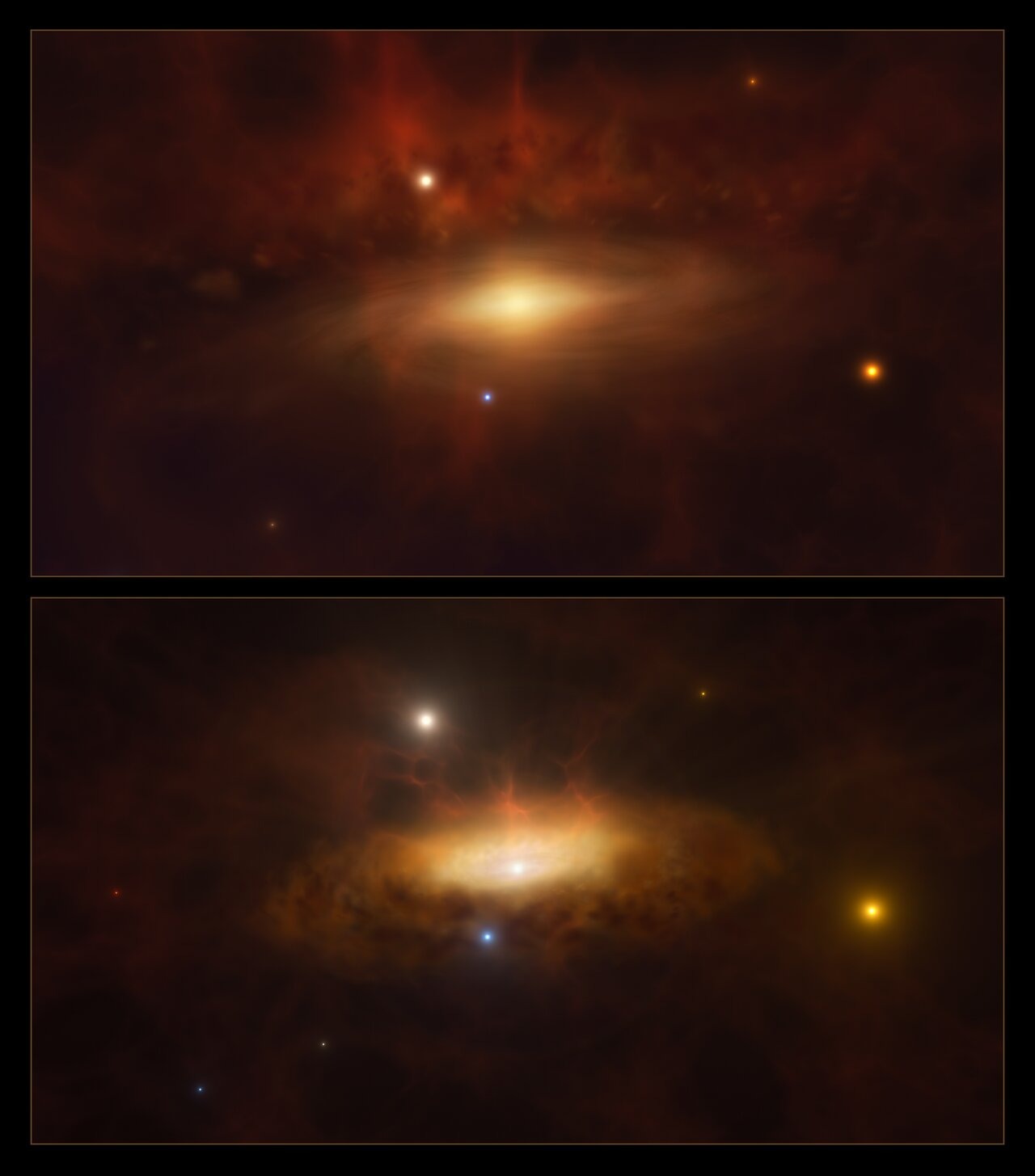Five years ago, the galaxy, located 300 million light-years away, significantly increased its brightness in the ultraviolet, optical and infrared spectrum. This year it began emitting X-rays, indicating that its initial bright glow was only the beginning.

Before 2019, the galaxy was dim for two decades. According to astronomers, its revival may be due to the activity of a supermassive black hole in the galaxy’s core.
“This behavior is unprecedented. Regardless of the nature of the variations, [this galaxy] provides valuable information on how black holes grow and evolve,” said Paula Sánchez Sáez, a researcher at the Millennium Institute of Astrophysics in Chile.
Galaxy SDSS1335+0728 first caught the attention of the Zwicky Transient Facility telescope when a bright light source was detected in a different image. The researchers concluded that the changes in brightness indicated that the black hole with a mass about a million times greater than the mass of the Sun, activated, and began to more actively absorb the surrounding matter, illuminating everything around with intense light. In February, the object began emitting X-rays, indicating increased activity of the black hole.
“These giant monsters usually are sleeping and not directly visible. In the case of SDSS1335+0728, we were able to observe the awakening of the massive black hole, [which] suddenly started to feast on gas available in its surroundings, becoming very bright,” said study co-author Claudio Ricci of the University of Diego Portales.
The team plans to continue observations to determine the nature of this event. It may be a rare tidal disturbance where a passing nearby object is torn apart by the gravitational force of the black hole, and the matter falling into it forms a bright accretion disk. If so, this tidal disruption is the longest and weakest ever observed.
Instruments such as the Very Large Telescope (VLT) and its successor, the Extremely Large Telescope (ELT), can detect more light from these rare events. In addition, the Vera Rubin Observatory’s new LSST camera, which will soon be operational, will continuously image the entire southern sky. It will help capture variable phenomena such as the SDSS1335+0728 awakening, as well as fleeting events that will help reveal the mysteries of the cosmos.
We previously reported on how supermassive black holes fed on intergalactic gas.
According to eso.org


